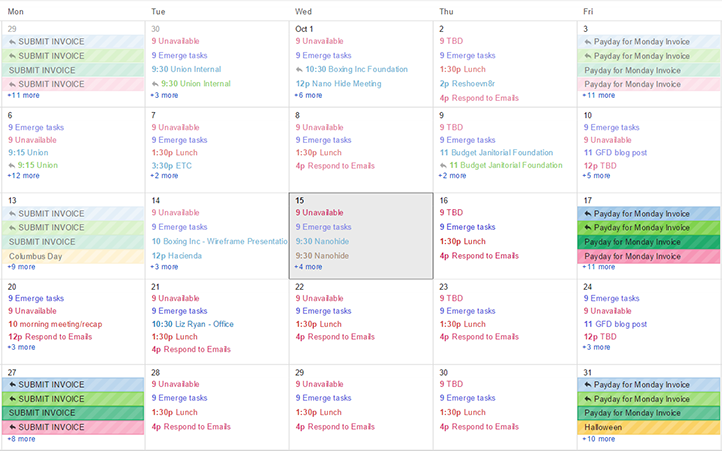1. Make a list of weekly/daily tasks and projects.
The most organized people make lists for every single facet of their lives, but at work this strategy is extremely valuable. Making lists and checking off completed items not only promotes organization, it also offers a personal feeling of accomplishment that makes us feel secure and sure that we have completed at least one task for the day.
2. Organize lists based on priority level.
Have you ever had a day at work where every single task seems to be high priority either for clients or internal progress? I’ve experienced this before where items keep piling on and all of a sudden I am lost in a sea of high priority tasks to complete during the workday. On Mondays, try color coding your tasks with high, medium and low priority to give yourself a visual representation of what is the most important versus least important.
3. Break down larger projects into smaller tasks.
The cardinal rule of reaching the finish line on a project or single task is breaking down the problem to see what can be done first and what is better left until the end. Seeing tasks broken down helps you determine a realistic timeline for the project and you can set short-term deadlines for each task without feeling overwhelmed by the sheer scope of the project.
 4. Assign a realistic set amount of time to complete each task.
4. Assign a realistic set amount of time to complete each task.
Don’t overwork yourself just to check off all of your tasks for the day. Decide which task needs more time, and which ones would be relatively quick to complete. Decide how you want to accomplish these tasks and allocate your time accordingly. My favorite way to set deadlines is to overestimate the amount of time needed to complete a project to alleviate some stress and allow myself to stay focused on the task at hand.
5. Assign soft deadlines (a few hours/days ahead) and hard deadlines (the actual due date/time) for tasks and projects to allow room for error.
Management likes hard deadlines, but creating soft deadlines is valuable for personal productivity and to maintain quality. Understanding when a project or task is due is one thing, but meeting expectations within that amount of time is another thing altogether. I like to set my soft deadlines at least a few hours ahead of the hard deadlines to allow for final edits or fixes.
 6. Write these down on a calendar or planner and put it where it’s visible.
6. Write these down on a calendar or planner and put it where it’s visible.
You can get as creative with this as you want. I like to color code my tasks with colored highlighters, for example. If you’re not into using paper calendars or planners, there are also plenty of organizational apps available online. Some examples include Google calendar and Asana.
Now that you’ve organized your tasks and set deadlines for the rest of the week, all you have to do is check your calendar or planner at the beginning of each day to review that day’s to-do list. Best of all, you get the satisfaction of checking off each task as you complete it. Ah, sweet systematization.





 4. Assign a realistic set amount of time to complete each task.
4. Assign a realistic set amount of time to complete each task. 6. Write these down on a calendar or planner and put it where it’s visible.
6. Write these down on a calendar or planner and put it where it’s visible.